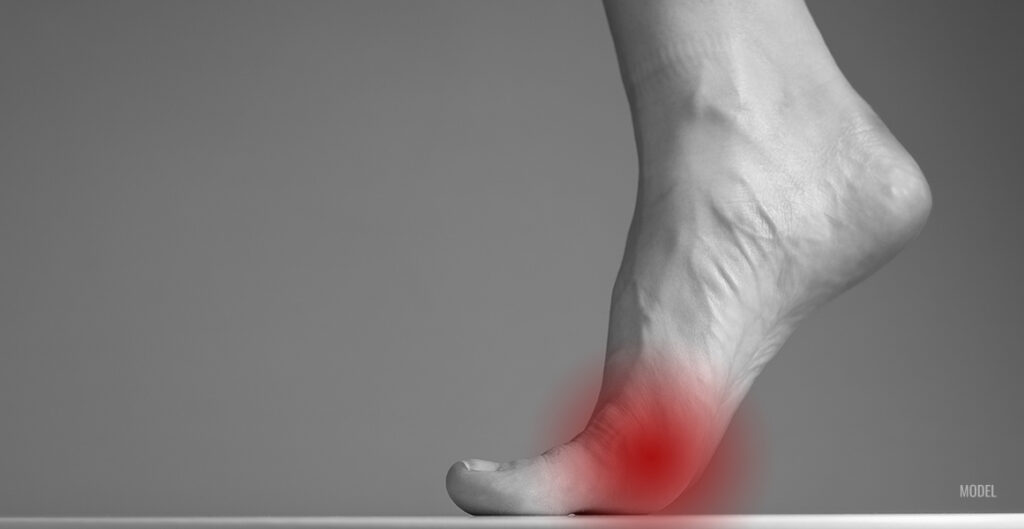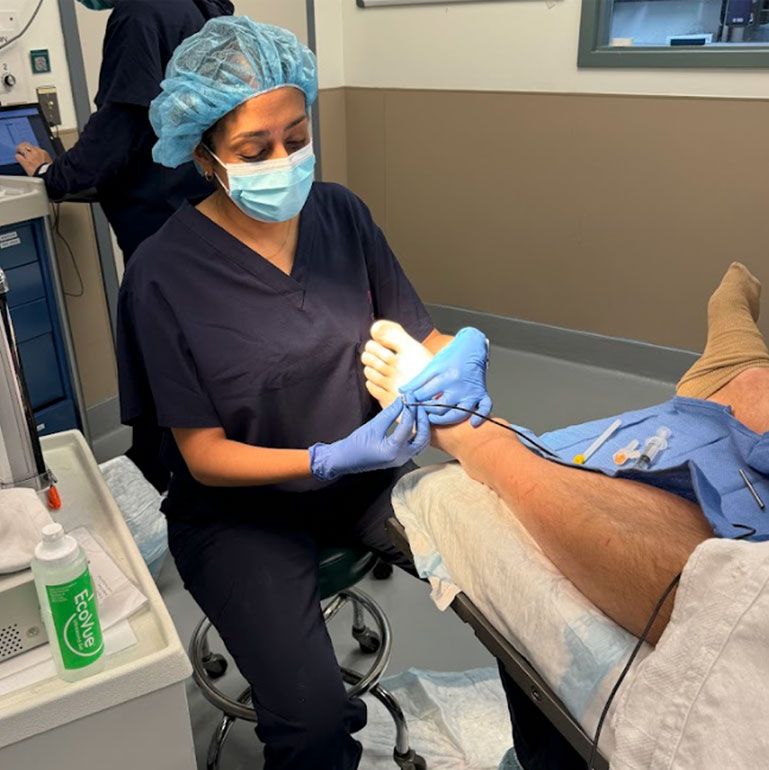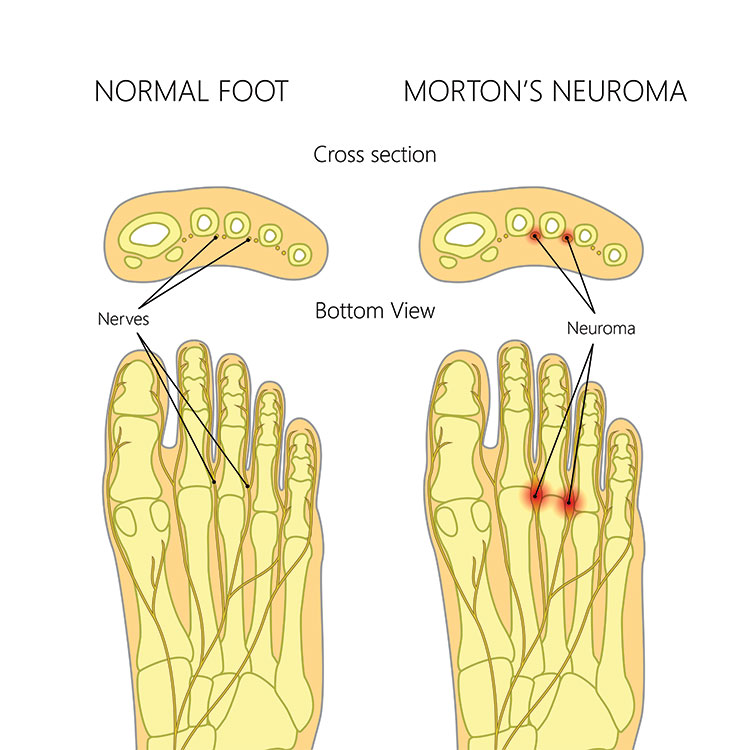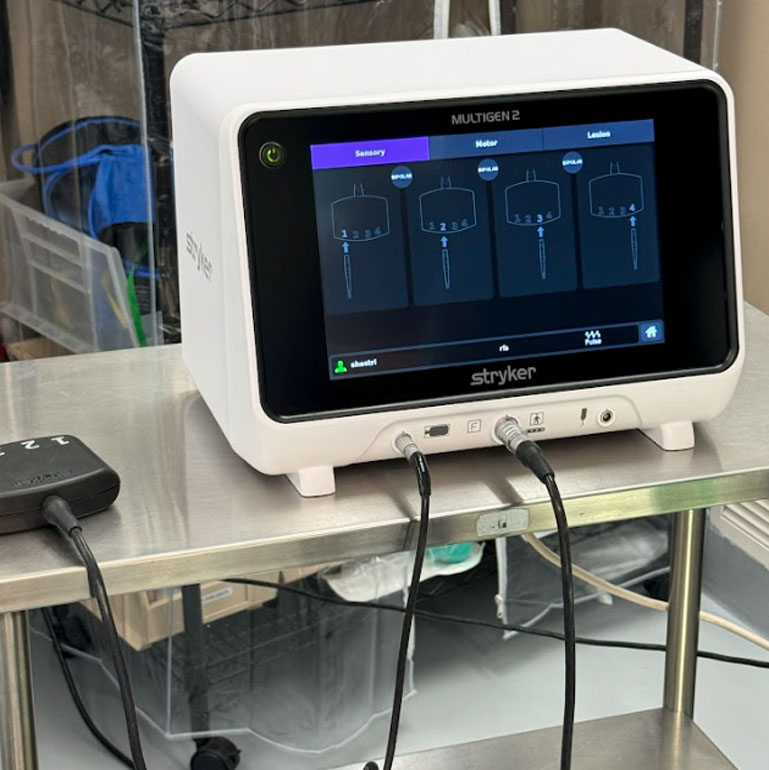Relieving Foot Pain: A Comprehensive Guide to Radiofrequency Ablation (RFA) for Neuromas
Posted March 11, 2024 in Dr. Shastri
Neuromas, often causing discomfort and pain in the feet, have traditionally been challenging to treat. In this comprehensive guide, we’ll explore an innovative solution—Radiofrequency Ablation (RFA)—that is changing the landscape of neuroma treatment.
4 Min Read

An Effective and Minimally Invasive Treatment for Neuromas at Chelsea Foot & Ankle
Neuromas are a painful condition caused by inflammation of the nerves between the metatarsal bones behind the middle toes, which leads to pain between the toes and the ball of the foot.
Some symptoms of neuromas include:
- Pain between the toes or ball of the foot
- Numbness, burning or tingling between the toes or ball of the foot
- A clicking or popping sensation in the ball of the foot
- A sensation of walking on pebbles, a bunched up sock or something in your shoes

The pain and irritation associated with neuromas can be difficult to live with, so at Chelsea Foot & Ankle, we are committed to providing our patients with effective, conservative treatments. We aim to help our patients achieve lasting care for their neuromas, keeping surgical intervention as a last resort.
Before her time at Chelsea Foot & Ankle, Dr. Shastri was a surgeon at The Neuroma Treatment Center of NYC for over 15 years, where she mastered neuroma treatments with radiofrequency ablation. She is thrilled to provide this unique, minimally invasive service to our patients suffering from neuromas.

What is Radiofrequency Ablation (RFA)?
Radiofrequency Ablation (RFA) is a minimally invasive procedure that uses targeted heat to heat the sensory nerve and alleviate the symptoms of neuromas. Unlike traditional treatments, RFA offers a precise and effective approach to address this common foot condition.
As the radiofrequency heats the sensory nerve, the heat breaks down proteins and blocks the nerves from transmitting pain. At this temperature, radiofrequency ablation may also induce the healing process by causing the creation of new blood vessels.
The minimally invasive procedure is associated with high patient satisfaction and long-term pain relief for neuromas.
Who Is a Candidate for RFA?
RFA is particularly recommended for individuals experiencing persistent foot pain attributed to neuromas. This procedure is often considered when conservative measures, such as injections, orthotics or medication, have not provided sufficient relief. RFA is ideal for patients who need effective care but would like to avoid surgery until absolutely necessary.
What Can I Expect from RFA Treatments?
The RFA procedure is primarily painless, as a local anesthetic is used for optimum comfort. Once the treatment area is numbed, a specialized probe delivers radiofrequency energy to the affected nerve. This energy creates a controlled lesion, reducing the nerve’s ability to transmit pain signals. The entire process is ultrasound guided to ensure accuracy.
What Are the Benefits of RFA?
RFA is a fantastic treatment option for patients who have not had success with more conservative methods and who may not be ready for surgery yet.
The benefits of RFA for neuromas include:
- Minimally invasive: RFA is a less invasive alternative to traditional surgical methods.
- Quick Recovery: Patients typically experience a faster recovery compared to more invasive procedures.
- Precision: Imaging technology allows for precise targeting, minimizing the impact on surrounding tissues, which lends itself to a lessened recovery time.

What Is Recovery From RFA Treatments Like?
Following RFA, patients can expect a brief recovery period. Following post-procedure care guidelines is essential for optimal healing. Most individuals can resume normal activities relatively quickly.
Radiofrequency Ablation FAQs:
Is RFA painful?
The procedure is typically well-tolerated, and patients are given local anesthesia to minimize discomfort.
How long does the RFA procedure take?
The duration of the procedure can vary but is generally completed within an hour.
Are there any risks associated with RFA?
While RFA is considered safe, like any medical procedure, there are potential risks. Your podiatrist will discuss these with you before the procedure.
Interested in RFA Treatments for Neuromas in NYC?
Radiofrequency Ablation (RFA) is a promising solution for individuals suffering from foot neuromas. Its minimally invasive nature and precise targeting offer patients a quicker path to relief and recovery.
If you’re experiencing persistent foot pain from neuromas, call Chelsea Foot & Ankle today at (646) 929-4149 to schedule a consultation with our neuroma specialist, Dr. Aditi Shastri.
